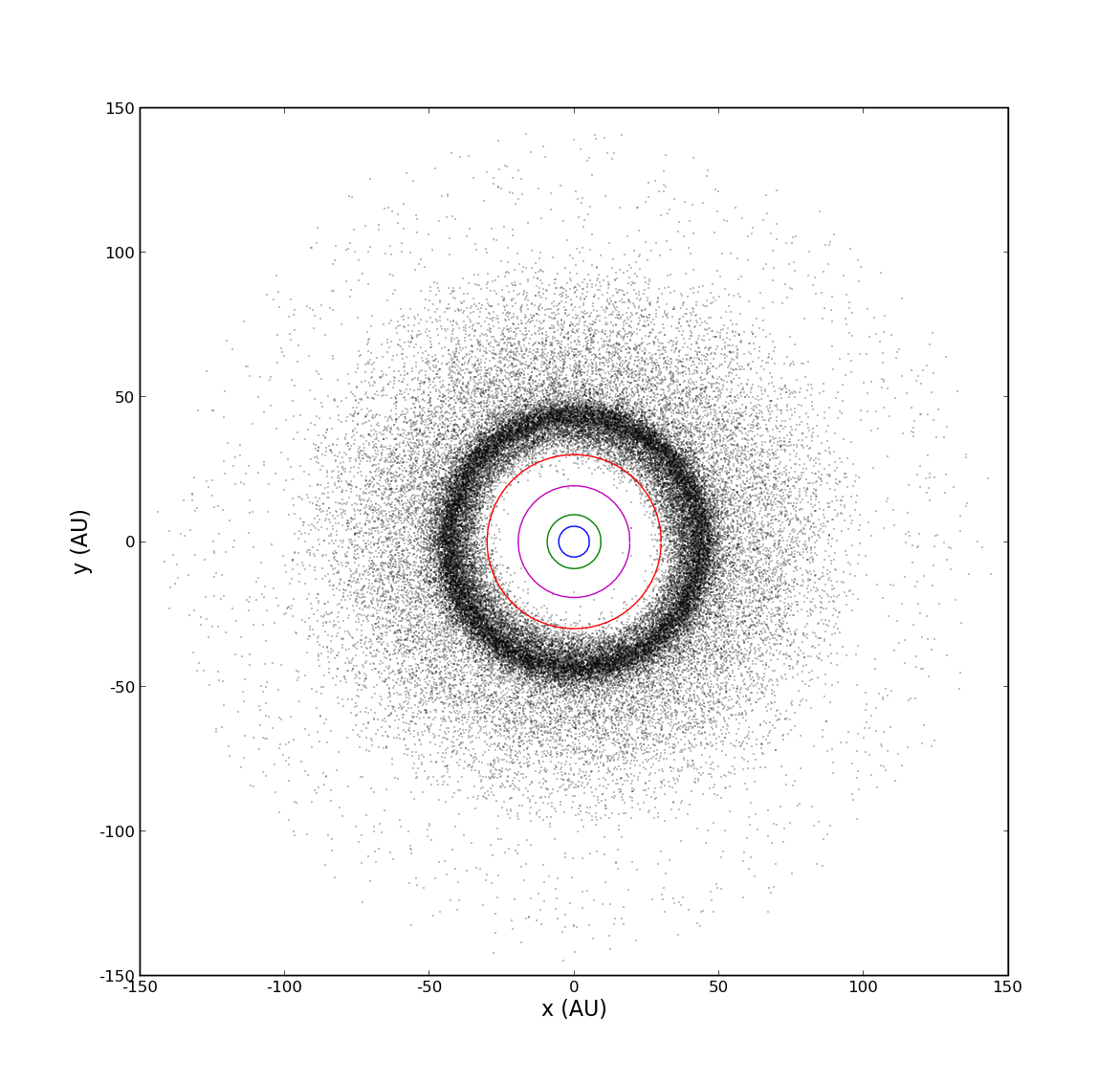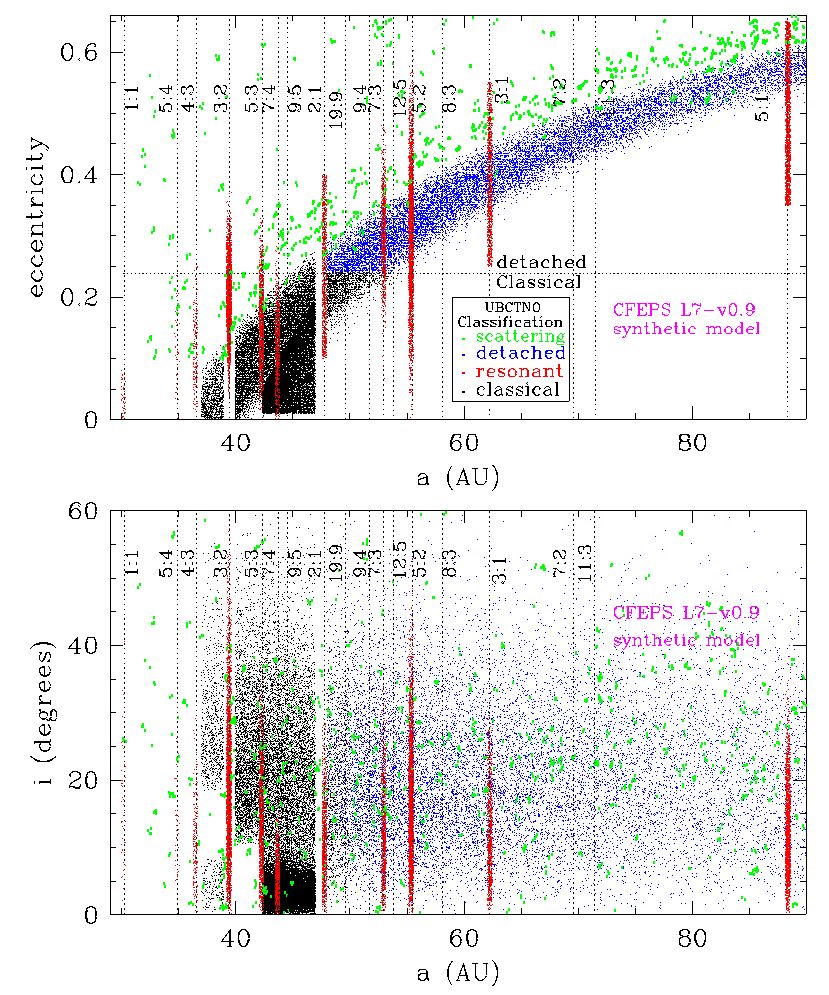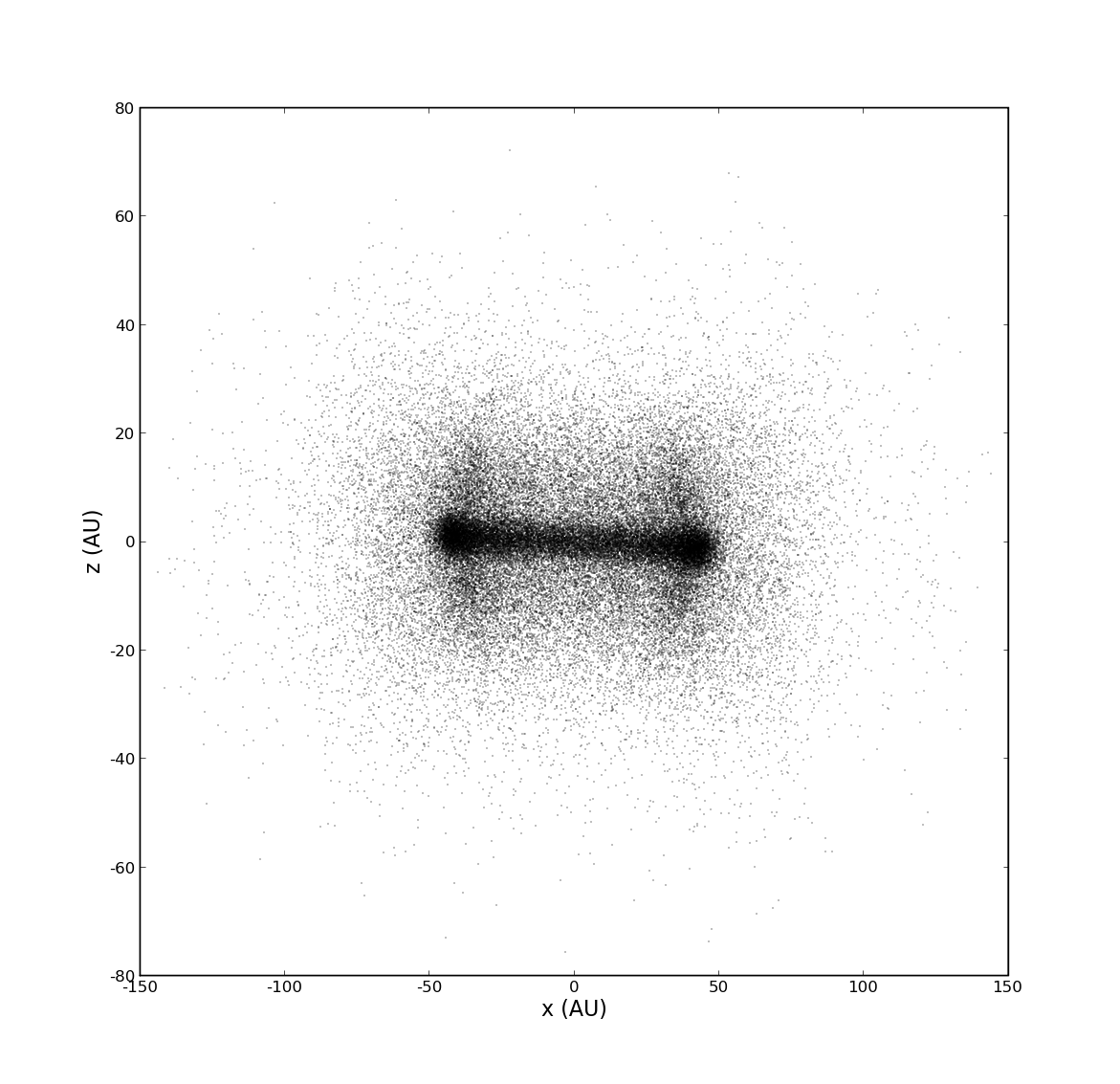The file L7SyntheticModel-v09.txt.gz contains the orbit+H-magnitude with corresponding dynamical classifications for each member of our synthetic model.
PLEASE see the bottom of this page for information on the known short comings of this synthetic model realization.
The L7 synthetic model is based on the CFEPS studies of the inner, main, and outer classical belt, along with those resonant populations for which the CFEPS project has at least one detection. Essentially this is our debiased model of the Kuiper Belt’s true orbital distribution, sampled to give a calibrated number of TNOs down to H_g magnitude 8.5. This H magnitude is a compromise between the H_g=9 limit down to which CFEPS can study the resonant populations and the H_g=8 limit to which we quantitatively constrain the main-belt populations; our synthetic model is a mild extrapolation to sizes that are smaller than were detected by CFEPS.

Direct comparison between the L7 synthetic model and other orbit distribution models should, as far as possible, be avoided. The L7 model is a plausible but non-unique representation of intrinsic orbit distribution of the Kuiper belt. The bulk orbital properties of this model match those of the CFEPS orbit cataloge, when observed through the Survey Simulator. The L7 model could differ from the a given formation model in a region of low detectability and thus the level of disagreement cannot be determined by direct comparison of the input models; instead use the CFEPS Survey Simulator to choose between models.
Caveats
Please be aware of the following known weaknesses of the current CFEPS-L7 version 0.9 synthetic model

- The q > 100 components of the Kuiper Belt are not included.
- The structure of the a/e resonance borders has only a minimal effect on detectability and are not precisely determined.
- The orbital elements of the hot main classical belt model have not been precisely tuned to entirely avoid the nu8 secular resonance.
- Classification in the synthetic file is known because we know from what population the synthetic object was drawn; this is not true for non-resonant TNOs in the main belt, which consists of overlapping hot, kernel, and stirred components.
ACKNOWLEDGEMENT
Please acknowledge usage of this model by referencing the papers:
- Kavelaars et al., 2009, ‘The Canada France Ecliptic Plane Survey – L3 data release: the orbital structure of the Kuiper belt.’ AJ, 137, 4917
- Petit et al (2010) ‘The Canada France Ecliptic Plane Survey – L7 data release: the orbital structure of the Kuiper belt’, AJ, in prep.
- Gladman et al (2010) The Canada France Ecliptic Plane Survey – L7 data release: the resonant population of the Kuiper belt. AJ, in prep.
